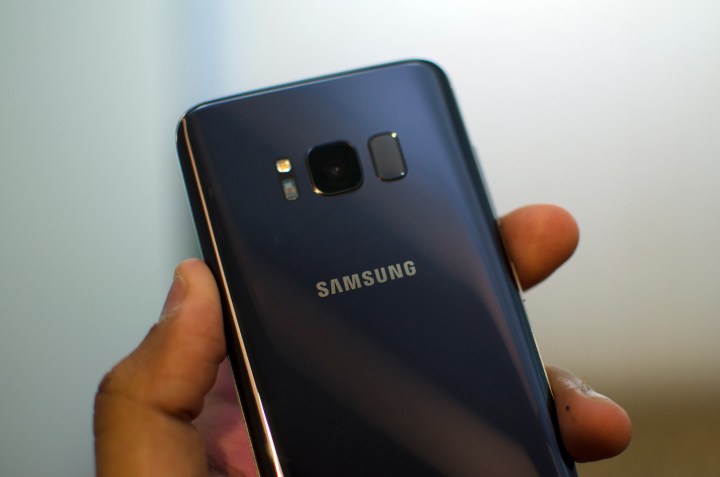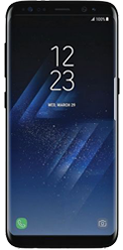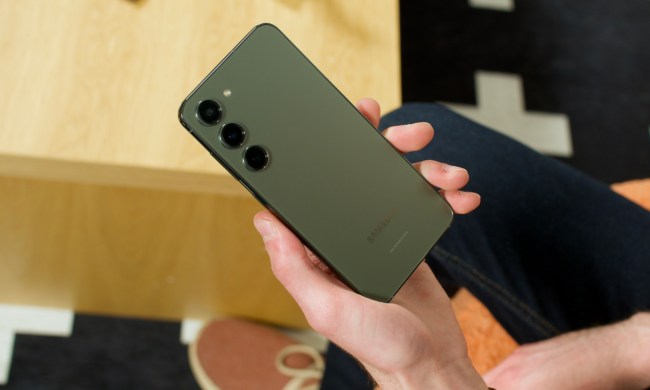
The South Korean tech giant needed to hit it out of the park with this year’s flagship, and so it took its time, neglecting to reveal the Galaxy S8 during Mobile World Congress in February, and overhauling its safety protocol in the meantime. Now, at long last, Samsung has returned — and made a statement in the process. The Galaxy S8 looks to be one of the most significant leaps forward, particularly in design, of any new product in the company’s flagship lineage.
But last year’s Galaxy was no slouch either, and although the S8’s exterior certainly fits the revolutionary bill, it remains to be seen if Samsung’s latest boasts enough meaningful improvements to necessitate an upgrade — especially when the S7 can be had for significantly less after a year on the market. How do they compare? We put them head-to-head to find out.
Specs
Samsung Galaxy S7 |
Samsung Galaxy S8 |
|
| Size | 142.4 x 69.6 x 7.9 millimeters (5.61 x 2.74 x 0.31 inches) | 148.9 x 68.1 x 8.0 mm (5.86 x 2.68 x 0.31 inches) |
| Weight | 5.36 ounces (152g) | 5.47 ounces |
| Screen | 5.1-inch Quad HD Super AMOLED | 5.8-inch Quad HD Super AMOLED |
| Resolution | 2,560 x 1,440 pixels | 2,960 x 1,440 pixels |
| OS | Android 6.0 Marshmallow (Upgradeable to 7.0 Nougat) | Android 7.0 Nougat |
| Storage | 32/64GB | 64GB |
| MicroSD card slot | Yes | Yes |
| NFC support | Yes | Yes |
| Processor | Qualcomm MSM8996, Snapdragon 820 (U.S.) Samsung Exynos 8890 (International) |
Qualcomm MSM8988, Snapdragon 835 (U.S.), Exynos 8895 (International) |
| RAM | 4GB | 4GB |
| Connectivity | Wi-Fi, 4G LTE, GSM, HSPA+ | Wi-Fi, 4G LTE, HSPA+ |
| Camera | Front 5MP, Rear 12MP with OIS | Front 8MP, Rear 12MP with OIS |
| Video | 2,160p 4K UHD | 2,160p 4K UHD |
| Bluetooth | Yes, version 4.2 | Yes, version 5.0 |
| Fingerprint sensor | Yes | Yes |
| Other sensors | Accelerometer, gyro, proximity, compass, barometer, heart rate | Accelerometer, gyro, proximity, compass, barometer, heart rate, iris scanner |
| Water resistant | Yes, IP68 | Yes, IP68 |
| Battery | 3,000mAh | 3,000mAh |
| Ports | Micro USB, 3.5mm headphone jack | USB Type-C, 3.5mm headphone jack |
| Quick Charging | Yes | Yes |
| Wireless Charging | Yes, Qi and PMA | Yes, Qi and PMA |
| Marketplace | Google Play Store | Google Play Store |
| Color offerings | Black, white, gold, silver | Black, silver, Orchid Gray (U.S. Models), Blue, gold (International models) |
| Availability | AT&T, Verizon, Sprint, T-Mobile | AT&T, Verizon, Sprint, T-Mobile, Samsung |
| Price | $570 | Starting at $720 |
| DT review | 4 out of 5 stars | First take |
In the U.S., the Galaxy S8 trades its predecessor’s Qualcomm Snapdragon 820 system-on-chip for the newer, more powerful 835. Elsewhere, the S8 will receive Samsung’s new Exynos 8895, replacing the 8890 seen in the international variant of the Galaxy S7. Both the Qualcomm and Samsung chips were comparable in performance last year, and the same looks to be true this time around.
Whichever S8 you buy, it’ll be capable of seriously fast download speeds over LTE — up to 1,000Mbps to be exact. Carriers will soon begin rolling out their gigabit-class LTE networks in limited capacities, and — unlike the S7 — the S8 is future-proof with the necessary hardware to take advantage of the new infrastructure as it proliferates over the next several years.
The Galaxy S8 also utilizes Bluetooth 5.0, which offers improved range and data transfer, though not at the same time. It’s still far superior to the Bluetooth 4.2 connectivity on the S7.
In terms of memory, the S8 retains the 4GB RAM of its predecessor. However, Samsung has thankfully followed the example of Apple and LG and decided to bump up base storage in the S8 to 64GB, up from half of that in the S7. As usual, you can add a MicroSD card to raise that total even higher, if you wish.
The added processing power, future-proofed LTE connectivity, and greater stock storage make the Galaxy S8 the clear winner in the specs race.
Winner: Samsung Galaxy S8
Design and display

Just as the Galaxy S7 featured a Quad HD Super AMOLED panel, so too does its successor. But that doesn’t mean they share the same resolution — the S8 has a slightly higher 2,960 x 1,440 pixel resolution. That difference is due to size and the Edge display, which both the S8 and S8 Plus utilize.
The S7 offers a 5.1-inch screen, whereas the S8 has a much bigger 5.8-inch curved screen. While that may sound too big, the Galaxy S8 is fairly compact because Samsung massively shrunk the bezels — so you’re getting more display in a similar frame. To make room for this edge-to-edge panel, Samsung had to remove the physical home button. It opted for a pressure-sensitive home button in the display, similar to Android’s on-screen buttons. Meanwhile, the fingerprint sensor was moved to the rear, to the right of the center-mounted camera.
Otherwise, these phones look pretty similar along the sides and the back, right down to the materials. Samsung’s trademark polished glass cloaks the rear of the S8, surrounded by a ring of aluminum.
The screen really is the differentiating factor between the design of both models. The wider, 18:5:9 aspect ratio on the S8 lets you view more content, potentially making multitasking easier.
As long as you can put up with the fingerprint sensor moving to the back, the S8’s luxurious display and astonishing screen-to-bezel ratio makes for a device that is simultaneously more useful and aesthetically pleasing than the one it replaces.
Winner: Samsung Galaxy S8
Battery life and charging

The Galaxy S8’s battery retains the 3,000mAh capacity of its predecessor, but it will benefit from Qualcomm’s Quick Charge 4.0 debuting with the Snapdragon 835. According to the chip maker, this newest iteration of its fast charging tech is 20 percent faster and 30 percent more efficient than the previous one, and can deliver five hours of use in five minutes. Like the S7, the S8 will also support wireless charging.
The Snapdragon 835’s 10nm manufacturing process also makes it a bit smaller than the 14nm chip featured in last year’s Galaxy S7, leading to a 25 percent reduction in power consumption, according to Qualcomm. All of these tweaks should help keep the S8 up and running for longer on a charge than the outgoing flagship, despite the size of the battery remaining unchanged.
When we reviewed the S7 last year, we found its battery life to be satisfactory — if a little unimpressive — and averaged a little more than a day of use. A more frugal processor and improved Quick Charge capabilities mean Samsung’s latest is likely to eclipse that benchmark.
Winner: Samsung Galaxy S8
Camera, software, and price
Camera

The Galaxy S8’s rear camera is still rated at 12 megapixels, while the front sees a bump from 5 to 8 megapixels. We were wowed by the performance of the Galaxy S7 last year, particularly in low-light conditions, thanks in no small part to the rear lens’ f/1.7 aperture. The S8 doesn’t improve on the rear camera, but instead focuses on the changes to the front.
Samsung has added auto-focus to the S8’s selfie cam, making it easy to capture a group photo. While improvement of the primary camera appears to be more iterative this year, the front-facing camera boasts clear enhancements that make the S8 the more versatile option in everyday use.
Winner: Samsung Galaxy S8
Software
Samsung began the roll out of Android 7.0 Nougat to the Galaxy S7 in January, and, unsurprisingly, the Galaxy S8 will launch with the same version. While the core suite of Samsung apps will see some modest improvement, like Music, S Health, and a new Family Care parental controls app, the major difference between the two models is the addition of Samsung’s personal assistant, Bixby.
Samsung is pitching Bixby as a major advancement over its previous S Voice service, and much of that has to do with Bixby’s artificial intelligence. According to the company, Bixby can perform any action you typically make by touch on supported apps. Users can instantly summon Bixby through a dedicated button on the side of the device, and you can even trigger it in the camera app to read QR codes, identify objects, and more. However, weeks after the S8’s launch, some Bixby features are still not live, including voice recognition — so it seems you’ll have to wait a little longer if you want to get the most out of Samsung’s new personal assistant.
Ultimately, we’re not sure useful Bixby will be, but there’s also DeX — a docking station for the S8 that enables a desktop Android mode on an external monitor. Samsung also said it has emphasized a more coherent design theme on the user interface of the S8. For all these improvements, Samsung’s latest flagship comes out on top in terms of software.
Winner: Samsung Galaxy S8
Price and availability
The Galaxy S8 was released on all four major carriers in the U.S. on April 21. It is available in three colors: Black Sky, Orchid Grey, and Arctic Silver. Prices from the carriers range from $720 to $750 — $100 more than the Galaxy S7 at launch.
Samsung is demanding a premium for this year’s flagship, making it one of the more expensive smartphones on the market today. While the S8’s display and design have been vastly improved, the practical benefits aren’t quite so clear, as the S7 was already a smooth-performing, powerful device.
Keeping that in mind, the S7 can be had for far less — just $570 direct from Samsung, and a couple bucks more from the carriers. Amazon is even selling the phone right now for $430. If you’re not that smitten with the S8’s looks, the S7 is an excellent alternative.
Winner: Samsung Galaxy S7
Overall winner: Samsung Galaxy S8
After seven iterations of Samsung’s boundary-pushing smartphone — some less significant steps forward than others — the Galaxy S8 brings an impressive design, the latest and greatest in artificial intelligence, and class-leading silicon to match.
The Galaxy S8 is the better device — but is it several hundred dollars better? That’s a question only you can answer, given your usage patterns and what you prioritize in a smartphone. The silver lining to this comparison is that, no matter which Galaxy you choose, you likely won’t be disappointed.
Article originally published on 03-30-2017 by Adam Ismail. Updated on 04-25-2017: Updated Bixby information in the Software section.




